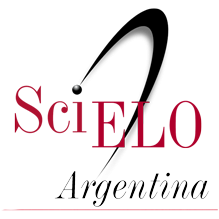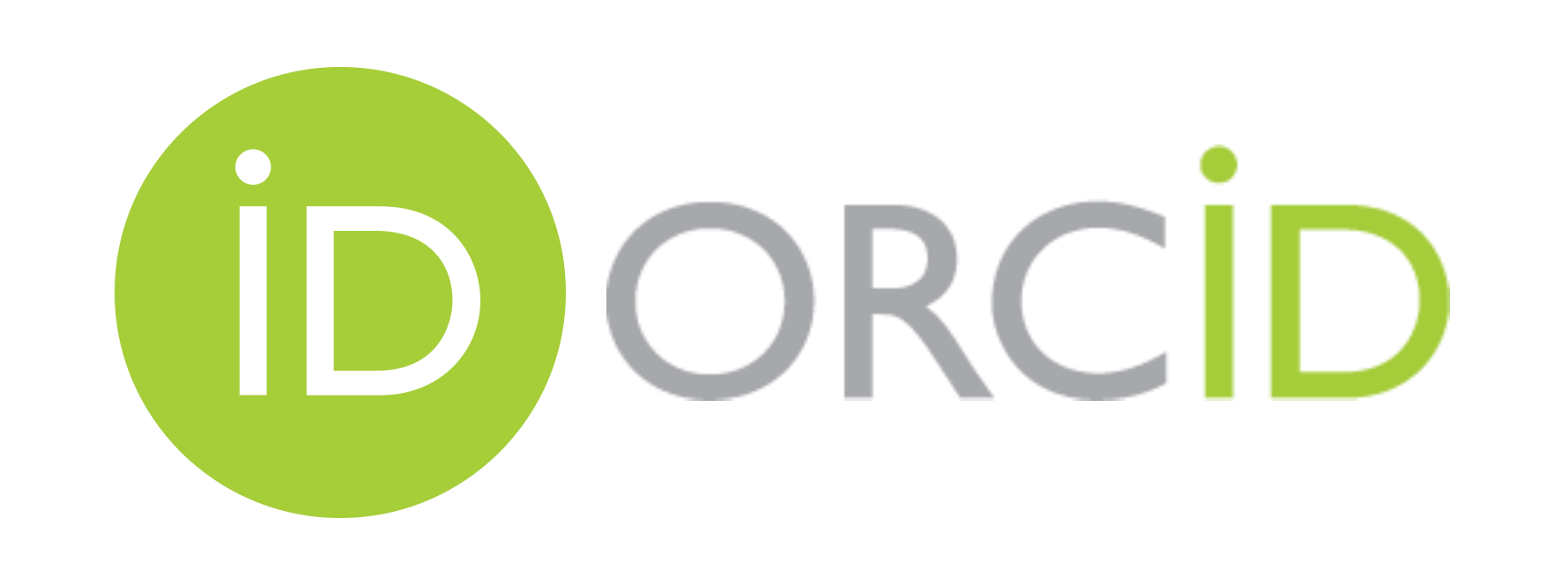El bruxismo como causa de desgaste dental
Una actividad fisiológica demandante en el sistema estomatognático del humano moderno
DOI:
https://doi.org/10.24215/18536387e083Palabras clave:
manejo del estrés, masticación, abrasión dental, guía oclusalResumen
La masticación es considerada la función principal del sistema estomatognático y de los dientes. Estudios realizados en los años 70 y 80, revelaron que practicamente no hay contacto dentario durante la masticación, excepto durante la fase de máxima intercuspidación. Aunque la masticación se basa en un patrón muscular automatizado, es todavía una actividad consciente. El desgaste dental es mayoritariamente atribuido a la abrasión causada por los componentes más duros de la comida o por contaminación de ésta con materiales abrasivos como sílice o carbonatos. En cambio, el bruxismo del sueño es un movimiento excursivo, inconsciente, de los dientes inferiores, que utiliza toda la longitud de las guías oclusales con mayor fuerza muscular y sin la interposición del bolo alimenticio. Por esa razón, puede resultar en contactos dentales de mayor extensión, con el resultado de pérdida de material. Al considerar los humanos modernos que utilizan una dieta blanda y refinada, que generalmente no contribuye para el desgaste dentario, la posibilidad de que el bruxismo sea el mayor contribuyente para la pérdida de material dentario no puede ser descartada. Así, los patrones de desgaste dentario en sujetos modernos y en poblaciones antiguas deberían ser considerados con base en la experiencia clínica del análisis de las actividades de bruxismo y masticación en sujetos vivos. En este artículo se presenta la experiencia clínica en pacientes con bruxismo y con desgaste dental en sociedades industrializadas contemporáneas como una posible fuente de información que se debe integrar al análisis del desgaste encontrado en hallazgos arqueológicos.
Descargas
Referencias
Andrisani, G., & Andrisani, G. (2021). The neurophysiological basis of bruxism. Heliyon, 7(7), e07477. https://doi.org/10.1016/j.heliyon.2021.e07477
Avivi-Arber, L., Martin, R., Lee, J.-C., & Sessle, B. J. (2011). Face sensorimotor cortex and its neuroplasticity related to orofacial sensorimotor functions. Archives of Oral Biology, 56(12), 1440-1465. https://doi.org/10.1016/j.archoralbio.2011.04.005
Benazzi, S., Nguyen, H. N., Schulz, D., Grosse, I. R., Gruppioni, G., Hublin, J.-J., & Kullmer, O. (2013). The evolutionary paradox of tooth wear: Simply destruction or inevitable adaptation? PLOS One, 8(4), e62263. https://doi.org/10.1371/journal.pone.0062263
Bustos, A. J., Al-Talib, T., & Abubakr, N. H. (2020). Retrospective analysis of the association of non-carious cervical lesions with bruxism. Open Journal of Stomatology, 10(2), 11-18. https://doi.org/10.4236/ojst.2020.102002
Corruccini, R. S. (1999). How anthropology informs the orthodontic diagnosis of malocclusion’s causes. Edwin Mellen Press.
Cunha‐Cruz, J., Pashova, H., Packard, J. D., Zhou, L., & Hilton, T. J. for Northwest PRECEDENT. (2010). Tooth wear: Prevalence and associated factors in general practice patients. Community Dentistry and Oral Epidemiology, 38(3), 228-234. https://doi.org/10.1111/j.1600-0528.2010.00537.x
d’Incau, E., Couture, C., & Maureille, B. (2012). Human tooth wear in the past and the present: Tribological mechanisms, scoring systems, dental and skeletal compensations. Archives of Oral Biology, 57(3), 214-229. https://doi.org/10.1016/j.archoralbio.2011.08.021
Dominy, N. J., Vogel, E. R., Yeakel, J. D., Constantino, P., & Lucas, P. W. (2008). Mechanical properties of plant underground storage organs and implications for dietary models of early hominins. Evolutionary Biology, 35(3), 159-175. https://doi.org/10.1007/s11692-008-9026-7
Frosztega, W., Wieckiewicz, M., Nowacki, D., Michalek-Zrabkowska, M., Poreba, R., Wojakowska, A., Kanclerska, J., Mazur, G., & Martynowicz, H. (2022). Polysomnographic assessment of effects of tobacco smoking and alcohol consumption on sleep bruxism intensity. Journal of Clinical Medicine, 11(24), 7453. https://doi.org/10.3390/jcm11247453
Fuentes, R., Farfán, C., & Arias, A. (2021). Characteristics of chewing: An update of the literature. International Journal of Odontostomatology, 15(4), 873-881. http://dx.doi.org/10.4067/S0718-381X2021000400873
Gibbs, C. H., Lundeen, H. C., Mahan, P. E., & Fujimoto, J. (1981). Chewing movements in relation to border movements at the first molar. The Journal of Prosthetic Dentistry, 46(3), 308-322. https://doi.org/10.1016/0022-3913(81)90220-1
Gibbs, C. H., Mahan, P. E., Lundeen, H. C., Brehnan, K., Walsh, E. K., & Holbrook, W. B. (1981). Occlusal forces during chewing and swallowing as measured by sound transmission. The Journal of Prosthetic Dentistry, 46(4), 443-449. https://doi.org/10.1016/0022-3913(81)90455-8
Gibbs, C. H., Messerman, T., Reswick, J. B., & Derda, H. J. (1971). Functional movements of the mandible. The Journal of Prosthetic Dentistry, 26(6), 604-620. https://doi.org/10.1016/0022-3913(71)90085-0
Gibbs, C. H., Wickwire, N. A., Jacobson, A. P., Lundeen, H. C., Mahan, P. E., & Lupkiewicz, S. M. (1982). Comparison of typical chewing patterns in normal children and adults. Journal of the American Dental Association, 105(1), 33-42. https://doi.org/10.14219/jada.archive.1982.0073
Hori, N., Yuyama, N., & Tamura, K. (2004). Biting suppresses stress-induced expression of corticotropin-releasing factor (CRF) in the rat hypothalamus. Journal of Dental Research, 83(2), 124-128. https://doi.org/10.1177/154405910408300208
Kaidonis, J. A. (2008). Tooth wear: The view of the anthropologist. Clinical Oral Investigations, 12(S1), 21-26. https://doi.org/10.1007/s00784-007-0154-8
Kullmer, O., Benazzi, S., Fiorenza, L., Schulz, D., Bacso, S., & Winzen, O. (2009). Occlusal fingerprint analysis: Quantification of tooth wear pattern. American Journal of Physical Anthropology, 139(4), 600-605. https://doi.org/10.1002/ajpa.21086
Lavigne, G. J., Khoury, S., Abe, S., Yamaguchi, T., & Raphael, K. (2008). Bruxism physiology and pathology: An overview for clinicians. Journal of Oral Rehabilitation, 35(7), 476-494. https://doi.org/10.1111/j.1365-2842.2008.01881.x
Manfredini, D., Ahlberg, J., Castroflorio, T., Poggio, C. E., Guarda‐Nardini, L., & Lobbezoo, F. (2014). Diagnostic accuracy of portable instrumental devices to measure sleep bruxism: A systematic literature review of polysomnographic studies. Journal of Oral Rehabilitation, 41(11), 836-842. https://doi.org/10.1111/joor.12207
McEwen, B. S., & Gianaros, P. J. (2010). Central role of the brain in stress and adaptation: Links to socioeconomic status, health, and disease. Annals of the New York Academy of Sciences, 1186(1), 190-222.
https://doi.org/10.1111/j.1749-6632.2009.05331.x
Messerman, T. (1967). A means for studying mandibular movements. The Journal of Prosthetic Dentistry, 17(1), 36-43. https://doi.org/10.1016/0022-3913(67)90048-0
Miranda, J. S., Barcellos, A. S. de P., Oliveira, A. de S., Paradella, T. C., Kimpara, E. T., & Chaves, M. das G. A. M. (2017). Are non-carious cervical lesions more frequent in sleep bruxism patients? Brazilian Dental Science, 20(4), 49-54. https://doi.org/10.14295/bds.2017.v20i4.1445
Miyake, S., Yoshikawa, G., Yamada, K., Sasaguri, K., Yamamoto, T., Onozuka, M., & Sato, S. (2012). Chewing ameliorates stress-induced suppression of spatial memory by increasing glucocorticoid receptor expression in the hippocampus. Brain Research, 1446, 34-39. https://doi.org/10.1016/j.brainres.2012.01.011
Montastruc, J.-L. (2023). Drugs and bruxism: A study in the World Health Organization’s pharmacovigilance database. British Journal of Clinical Pharmacology, 89(12), 3765-3768. https://doi.org/10.1111/bcp.15884
Nukazawa, S., Yoshimi, H., & Sato, S. (2018). Autonomic nervous activities associated with bruxism events during sleep. CRANIO®: The Journal of Craniomandibular & Sleep Practice, 36(2), 106-112. https://doi.org/10.1080/08869634.2017.1287232
Ohayon, M. M., Li, K. K., & Guilleminault, C. (2001). Risk factors for sleep bruxism in the general population. CHEST, 119(1), 53-61. https://doi.org/10.1378/chest.119.1.53
Ono, Y., Kataoka, T., Miyake, S., Cheng, S.-J., Tachibana, A., Sasaguri, K., & Onozuka, M. (2008). Chewing ameliorates stress-induced suppression of hippocampal long-term potentiation. Neuroscience, 154(4), 1352-1359. https://doi.org/10.1016/j.neuroscience.2008.04.057
Ono, Y., Kataoka, T., Miyake, S., Sasaguri, K., Sato, S., & Onozuka, M. (2009). Chewing rescues stresssuppressed hippocampal long-term potentiation via activation of histamine H1 receptor. Neuroscience Research, 64(4), 385-390. https://doi.org/10.1016/j.neures.2009.04.011
Onodera, K., Kawagoe, T., Sasaguri, K., Protacio-Quismundo, C., & Sato, S. (2006). The use of a Brux-Checker in the evaluation of different grinding patterns during sleep bruxism. CRANIO®: The Journal of Craniomandibular & Sleep Practice, 24(4), 292-299. https://doi.org/10.1179/crn.2006.045
Park, J.-M., & Ahn, J.-M. (2020). Association between torus mandibularis, self-reported bruxism and occlusion. Oral Biology Research, 44(1), 32-36. https://doi.org/10.21851/obr.44.01.202003.32
Piehslinger, E., Čelar, A. G, Čelar, R. M., Jäger, W., & Slavicek, R. (1993). Reproducibility of the condylar reference position. Journal of Orofacial Pain, 7(1), 68-75.
Piehslinger, E., Čelar, A. G., Čelar, R. M., & Slavicek, R. (1991). Computerized axiography: Principles and methods. CRANIO®: The Journal of Craniomandibular & Sleep Practice, 9(4), 344-355. https://doi.org/10.1080/08869634.1991.11678382
Richter, S., & Eliasson S. T. (2012). Prevalence of torus mandibularis in Viking Age Icelanders. Bulletin of the International Association of Paleodontology, 6(2), 40-50.
Sasaguri, K., Kikuchi, M., Hori, N., Yuyama, N., Onozuka, M., & Sato, S. (2005). Suppression of stress immobilization-induced phosphorylation of ERK 1/2 by biting in the rat hypothalamic paraventricular nucleus. Neuroscience Letters, 383(1-2), 160-164. https://doi.org/10.1016/j.neulet.2005.04.011
Sato, C., Sato, S., Takashina, H., Ishii, H., Onozuka, M., & Sasaguri, K. (2010). Bruxism affects stress responses in stressed rats. Clinical Oral Investigations, 14(2), 153-160. https://doi.org/10.1007/s00784-009-0280-6
Sato, S., Sasaguri, K., Ootsuka, T., Saruta, J., Miyake, S., Okamura, M., Sato, C., Hori, N., Kimoto, K., Tsukinoki, K., Watanabe, K., & Onozuka, M. (2008). Bruxism and stress relief. In M. Onozuka & C.-T. Yen (Eds.), Novel Trends in Brain Science (pp. 183-200). Springer. https://doi.org/10.1007/978-4-431-73242-6_11
Sato, S., & Slavicek, R. (2008). The masticatory organ and stress management. International Journal of Stomatology and Occlusion Medicine, 1, 51-57. https://doi.org/10.1007/s12548-008-0010-8
Sato, S., Yuyama, N., Tamaki, K., Hori, N., Kaneko, M., Sasaguri, K., Lee, M.-C.-i., Onozuka, M., & Slavicek, R. (2002). The masticatory organ, brain function, stress-release, and a proposal to add a new category to the taxonomy of the healing arts: Occlusion medicine. Bulletin of Kanagawa Dental College, 30(2), 117-126.
Slavicek, G. (2010). Human mastication. International Journal of Stomatology and Occlusion Medicine, 3, 29-41. https://doi.org/10.1007/s12548-010-0044-6
Slavicek, R. (1984). Die funktionellen Determinanten des Kauorgans. Verlag Zahnärztlich-Mediziniches Schrifttum.
Slavicek, R. (2002). The Masticatory Organ. Functions and Dysfunctions. GAMMA Medizinisch wissenschaftliche Fortbildungs-AG.
Smith. G. N., & Robb, N. D. (1996). The prevalence of toothwear in 1007 dental patients. Journal of Oral Rehabilitation, 23(4), 232-239. https://doi.org/10.1111/j.1365-2842.1996.tb00846.x
Sugimoto, K., Yoshimi, H., Sasaguri, K., & Sato, S. (2011). Occlusion factors influencing the magnitude of sleep bruxism activity. CRANIO®: The Journal of Craniomandibular & Sleep Practice, 29(2), 127-137. https://doi.org/10.1179/crn.2011.021
Suit, S. R., Gibbs, C. H., & Benz, S. T. (1976). Study of gliding tooth contacts during mastication. Journal of Periodontology, 47(6), 331-334. https://doi.org/10.1902/jop.1976.47.6.331
Toubol, J. P., & Michel, J. F. (1983). Le mouvement initial de Bennett. Expérimentation clinique, conséquences thérapeutiques. Les Cahiers de Prothèse, 42, 69-87.
Toyama, N., Ekuni, D., Fukuhara, D., Sawada, N., Yamashita, M., Komiyama, M., Nagahama, T., & Morita, M. (2023). Nutrients associated with sleep bruxism. Journal of Clinical Medicine, 12(7), 2623. https://doi.org/10.3390/jcm12072623
Tscharre-Zachhuber, C., & Riedl, M. A. (1988). Kaumusteruntersuchungen von Totalprothesenträger. Zeitschrift Für Stomatologie, 85(7), 423-428.
Watson, J. T., & Schmidt, C. W. (2020). An introduction to dental wear in evolutionary and biocultural contexts. In C. W. Schmidt & J. T. Watson (Eds.), Dental Wear in Evolutionary and Biocultural Contexts (pp. 1-10). Elsevier. https://doi.org/10.1016/B978-0-12-815599-8.00001-0
Wickwire, N. A., Gibbs, C. H., Jacobson, A. P., & Lundeen, H. C. (1981). Chewing patterns in normal children. The Angle Orthodontist, 51(1), 48-60.
Wilson, E. M., & Green, J. R. (2009). The development of jaw motion for mastication. Early Human Development, 85(5), 303-311. https://doi.org/10.1016/j.earlhumdev.2008.12.003
Yoshimi, H., Sasaguri, K., Tamaki, K., & Sato, S. (2009). Identification of the occurrence and pattern of masseter muscle activities during sleep using EMG and accelerometer systems. Head & Face Medicine, 5(1), 7. https://doi.org/10.1186/1746-160X-5-7
Descargas
Publicado
Número
Sección
Licencia
Derechos de autor 2024 Miguel Assis, Alejandra LondoñoLa RAAB es una revista de acceso abierto tipo diamante. No se aplican cargos para la lectura, el envío de los trabajos ni tampoco para su procesamiento. Asímismo, los autores mantienen el copyright sobre sus trabajos así como también los derechos de publicación sin restricciones.





